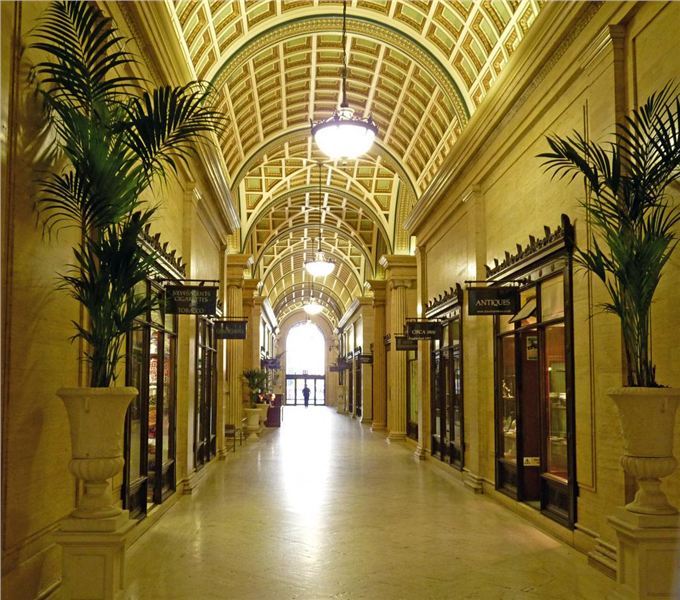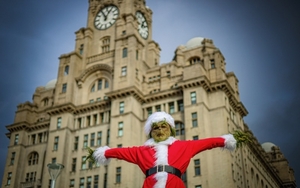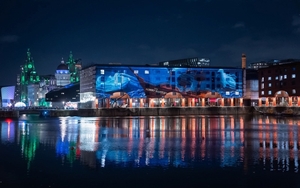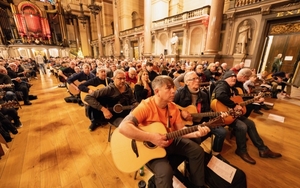HMRC wants security gates at either end of magnificent Holt Arcade
A PLAN to block the general public from the stunning ground floor interior of India Buildings is to be fought by a London-based campaign group.
The Twentieth Century Society says a scheme drawn up by local architects Falconer Chester Hall will see high security gates at either end of the Holt shopping arcade, which runs the length of the Grade II* building, along with what they say will be a number of other harmful alterations to the one of Liverpool's architectural jewels.
India Buildings was designed as offices by the famous Liverpool-born architect Herbert J. Rowse for the Alfred Holt & Co shipping line. When it opened in 1932 the building contained a bank, a post office and two rows of shops in a handsome vaulted marble arcade, accessible from both Water Street and Brunswick Street.
The society successfully applied for a listing upgrade in 2013 when it was discovered that previous owners had been undertaking unauthorised works.
The building is now owned by Shelborn Asset Management which is hoping to secure HMRC as a long-term tenant.
HMRC is currently undertaking an estate consolidation programme which will see its operations centralised in 13 regional hubs across the country.

A spokeswoman for the Twentieth Century Society said: "HMRC has submitted plans that will close the shopping arcade to the public, with security gates in each of the grand entrance lobbies. It also intends to carry out a number of other works including the replacement of the majority of the metal windows. These survive from the 1940s when the building was reconstructed following bomb damage, in a scheme overseen by the original architect, Rowse.
"A number of the upper floors retain most of their original layout. Much of this is to be stripped out by HMRC which wants an open plan working environment.”
High end retailers in the Holt Arcade’s bustling past sold everything from confectionery, stationary and tobacco to cameras, antiques and even rifles. However in recent years, particularly since the closure of the Liverpool Passport Office which, for decades, occupied the upper floors, many of the plate glass and wood fronted units have sat empty.
Last year, developer Lawrence Kenwright was thwarted in his bid to take over the building for another of his hotels.
Read: India Buildings slips through Lawrence Kenwright's fingers
Tess Pinto, Conservation Adviser for the C20 Society, said: “The India Buildings is undoubtedly one of the finest inter-war buildings in the country, and the shopping arcade is the centrepiece. Although it is not technically a right of way, the arcade has always been open for the public to enjoy and was designed for that purpose. It is a great shame that a government body will be curtailing public access to this stunning space, as well as destroying a lot of the surviving fabric on the upper floors."
The Twentieth Century Society was founded as the Thirties Society in 1979, and exists to safeguard the heritage of architecture and design in Britain from 1914 onwards.
A statement of influence in the world
Few buildings are as impressive as Liverpool’s India Buildings in Water Street, built in the 1920s as a statement to the city’s influence in the world.
India Buildings was built at a cost of £1.25m between 1924 and 1932 as the headquarters of Alfred Holt’s Blue Funnel Line, then regarded as a globally important steamship company.
The architect was the renowned Herbert Rowse, responsible for a string of Liverpool’s best known buildings.
Rowse, inspired by his own global travels, had a vision of a contemporary classic in the heart of Liverpool.
It was designed to be converted into a warehouse if needed and replaced an earlier building of the same name. During the World War II blitz of Liverpool it was badly damaged.
It later achieved national significance as one of the UK's few regional passport offices, employing several hundred people.
In its heyday more than 3,000 people worked over its floors.
Further reading: Sit-in at India Buildings














